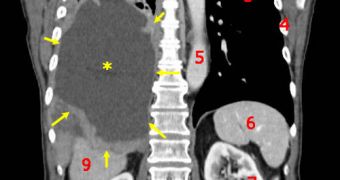Research groups around the world have over the years become aware of the fact that cancer tumors are vulnerable to the effects of moderate and high heat. But the issue with this was that scientists had no way of making good use of this information, even if they knew an approach would work. In other words, they were lacking the necessary technology to focus, orient and control the heat they applied to the tumor. Now, with the help of ultrasound-based guidance systems, this has become possible. The innovation was presented between March 7-10, at the AACR Dead Sea International Conference on Advances in Cancer Research.
“Low temperature controlled hyperthermia and high temperature treatments are beneficial in curing both malignant and benign tumors using minimally invasive and noninvasive ultrasound techniques,” explains Hashemite University assistant professor of biomedical engineering, Osama M. Al-Bataineh, PhD. The researcher and his team are based in Jordan. This approach, the expert explains, has been proven in past studies to be extremely efficient at causing damage within cancerous tumors, but also to have long-lasting effects, which prevent the tumors from repairing themselves. This means that, once the damage is down, the cancer cell agglomerations either remain stagnant, or are reduced in size.
Additionally, experts say, hyperthermia is an approach that has proven extremely useful in adding to the effects of established methods of treatment, including chemotherapy and immunotherapy. When used in combination, these methods boost each others' effects. Even moderate amounts of heat delivered to a tumor site are apparently capable of modifying the microcirculation of blood in the area, and also changes the permeability of the blood vessels altogether. Without a steady supply of blood, the tumor simply dies off. Researchers have over the years tried to develop therapies that constrict vessels around a tumor site, but thus far this work has had mixed results.
In the new experiments, prostate cancer cells exposed to a temperature of 50 degrees Celsius for 1 to 2 minutes began showing signs of necrosis, or cellular death. The same result was obtained by subjecting them to a medium temperature, of about 43 degree Celsius, for 30 minutes. Al-Bataineh said at the meeting that the work was very promising, but added that more studies were required before even talking of a human trial.

 14 DAY TRIAL //
14 DAY TRIAL //